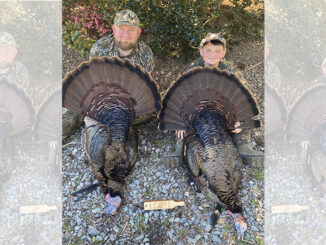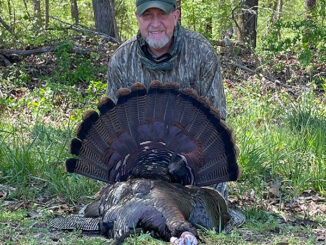
Largemouth bass fishing fanatics know the best place in North Carolina to catch a trophy lunker right now is Shearon Harris Lake in southwestern Wake County.
The 4100-acre Progress Energy impoundment is producing big, medium and small catches, depending on the weather, which has been unsettled recently, ranging from the 80s one day to the 40s the next day as fast-moving, windy weather fronts move across the state. Water temperatures have fluctuated as well, which has triggered or turned off bass bites.
“Harris bass fishing generally is pretty good right now,” said Joel Richardson of Kernersville, a guide and pro bass angler. “The odd thing about the lake is the color of the water. I don’t know what’s doing it, but I’ve never seen it this color, which is a brownish-green. Most of the time the water has a tannic-acid color. I’ve never seen that color in the spring here.”
Bass are hitting a variety of lures, including jerkbaits, Rat-L-Traps, spinnerbaits and shallow-running crankbaits. Recent fishing reports from Harris also indicate wacky-rigged Senko worms, 10-inch green-pumpkin plastic worms, Carolina-rigged lizards and red 1/4-ounce lipless crankbaits are producing bites in the 8-foot range off the edges of grass.
Richardson’s last full day of fishing produced nine bass, including seven weighing more than 4 pounds.
“Best places are the edges of the weed lines, but I actually caught a couple of good fish off of wood,” he said.
Most of these bass are coming in relatively shallow water of depths around 8 feet or less.
Richardson said the next warm spell should trigger the bass spawn.
“By the second full week of April, if we have some warm weather, fish will be sitting on the beds,” he said.
To find bedding fish, Richardson usually heads for protected coves on the north side of the lake, places that warm quickly on sunny days.
“The fish will be related to primrose vegetation,” he said. “This grass has little tiny pads and the beds will be in 3 feet of water or less. You can see them because the bass will clear out a selected area.”
Usually such areas will have shorelines marked by “dark sandy soil,” Richardson said. “It’s not red clay or rocky. You’ll also find more primrose growing in the water where that dark sandy soil is on the bank.”




